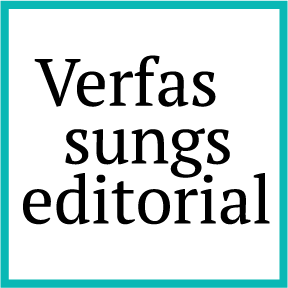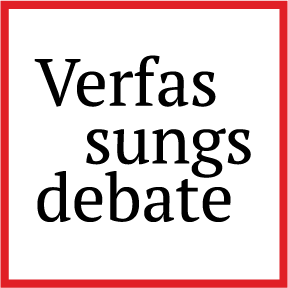Assets Without Alibi
The ECtHR Approves Confiscating Undeclared Wealth
Păcurar is yet another version of the familiar cat-and-mouse game between anticorruption agencies and corrupt public officials: some public officials quietly amass real estate, luxury cars, financial investments, or cash, and – once confronted by anticorruption agencies to explain the difference from their declared legal income – rely on whimsical excuses. On 24 June 2025, the ECtHR held that wealth may be taken away if public officials cannot explain that very difference.
The decision increases legislators’ and practitioners’ legal certainty when it comes to asset declarations and confiscation. First, undeclared wealth is in itself enough reason for civil confiscation. Second, the calculation is straightforward: incoming and outgoing cash flows are compared for short subperiods, and all subperiods in which legal income is lacking are aggregated into one confiscation total. And third, audits of asset declarations and confiscation of wealth can cover the entire time in office, which may be many years.
Pulp (fiscal) fiction
The Păcurar case originates from Romania. When asked to explain the difference between their wealth and their declared income, the Romanian public official relied on all sorts of excuses both familiar and implausible: it was a private loan (§ 101); a family member (often abroad) gifted me money (§ 16); I sold a car years ago for a good price but I forgot to whom (§ 16); guests at the last family celebration put a lot of envelopes with cash in the gift basket (§ 13); we have a profitable agricultural business (§ 13) – a convenient lie as in many countries small farms are unregistered (Hoppe/Kalniņš, p. 31). High level officials would not even shy away from explaining income from picking wild mushrooms or strawberries. By now, inspectors, journalists, and civil society watchdogs investigating public wealth disclosures respond to these stories with little more than an eye-roll.
Silence is not a defence
International stakeholders often underestimate the time and effort required to address the explanations – often implausible or outright false – offered by public officials. In the Păcurar case, more than ten witnesses were heard (§§ 32-33) as well as expert statements, and “documents [were] gathered from various authorities” (§§ 43-44). As the public official could contest any evidence in “adversarial proceedings” (§ 150) and had “ample opportunity to participate in the proceedings from the outset”, the confiscation of unexplained wealth did not place an unfair burden of proof on him (Article 6 ECHR; § 156).
The Court also rejected the public official’s complaint that the confiscation violated the protection of his property (Article 1 Protocol 1 ECHR), referring in large part to its reasoning related to fair trial (§ 195). However, the Court drew an important distinction: the confiscation did not serve to “prevent the illicit acquisition of property through criminal” acts but to “preserve integrity in public office by ensuring that declarations of assets and interests are correctly filled in and submitted” (§ 193). Therefore, the anticorruption agency did not have to show a link between the property and a criminal offence. The confiscation applied exclusively to public officials and only in cases where their wealth could not be explained.
Cash flows tell the truth
Romanian law defines unexplained wealth as a difference between “changes in assets during the exercise of public duties and functions and the income earned during the same period” (Article 18 Law no. 176/2010). Neither term is precise: incomes earned are also loans received, or savings at the beginning of the period (as already clarified by another section of the ECtHR in 2021, see here). As for assets, it is not important whether there are more or fewer. Assets can be (legally) received for free, e.g., in case of an inheritance. What counts is whether the public official spent money (cf. § 197), whether on assets, holidays, or private education. Furthermore, savings at the end of the period need to be justified by legal income as well (as the ECtHR rightly noted already in 2021, § 31 footnote 1). Therefore, unexplained wealth is not about income and assets, but about “comparing incoming and outgoing financial flows”, as a methodology published in 2013 first suggested, followed by the UNODC (2019, p. 17); the Basel Institute (2019, p. 47); the ECtHR (2021); several international vetting commissions (2023, Annex); as well as the World Bank (2023, p. 53).
The Păcurar case illustrates just how far identifying unexplained wealth of public officials has progressed. Ten years ago, the ECtHR struggled to navigate a tangle of numbers to calculate a total for criminal confiscation. The defendant had argued that inflation in Bulgaria made it impossible to compare the wealth of different years. The ECtHR lacked the analytical clarity to see through this flawed argument, effectively caving in when it assumed that “galloping inflation […] rendered any assessment of the actual amounts received and spent very difficult” (12655/09, § 48). This observation contradicts logic, and in case of cash, even physical laws: amounts spent stay the same, no matter what the inflation is; the same is true for income earned. Therefore, if, e.g., one earns in one year 10,000 Bulgarian Lev, but spends 30,000 Lev, the question remains as to where the missing 20,000 Lev come from. Inflation does not affect this calculation at all.
By comparison, the ECtHR in 2021 approved calculations of illicit enrichment for every year, correctly comparing the savings at the beginning of the year plus all incoming cash flows with all outgoing cash flows during the year plus savings at the end of the year (§ 31 footnote 1). The Court accurately disregarded inflation, even though in Albania, it totalled more than 3,000% between 1990 and 2020. In Păcurar, the inflation in Romania exceeded 300% between 2000 and 2010, but the Court, correctly, ignored this.
Shorter periods, bigger income gaps
The annual calculations approved by the ECtHR in the case at hand (§ 14) and in the 2021 decision have one more decisive advantage: they allow identifying more unexplained wealth than if doing a single calculation over a long period of time, e.g. 10 years. If the public official cannot explain a luxury expenditure in year 2 with her legal income, a loan received in year 9 might level out that expenditure if all 10 years are calculated together. With a yearly calculation (or even shorter periods), it remains visible that her expenditure in year 2 remains unexplained.
In this regard, the ECtHR (and Romanian authorities) interpreted the national law in the right way: “during the exercise of public duties” (Article 18 Law no. 176/2010) does not mean that one must (or even should) make one calculation for the entire period. This wording only defines the time span for which to look for unexplained wealth. Nothing captures this better than the wording of Moldova’s International Vetting Commission for judges: “The amounts of unjustified wealth in the periods in which it existed […] will be totalled” (Article 12 Rules).
Time does not protect you in office
The public official complained that “he had been expected to prove the source of income received some fifteen years earlier” (§ 161). The ECtHR rejected this argument, noting that the official “was aware of the legal obligation to declare his assets as long as he occupied a position as a public servant,” which necessarily included the verification of the declared data and the duty to provide explanations when required (§ 174). The Court had already endorsed financial audits going back some 15 years in the context of extraordinary vetting (2021, § 351). The rationale of the present case would allow going further still, even though it concerns only ordinary vetting, to cover any time in the past during which the official was obliged to submit declarations. The ECtHR shows limited sympathy for complaints about missing documentation from the distant past: the Court understands that this places officials
“in a somewhat difficult position to justify the lawful nature of the financial sources owing to the passage of time and the potential absence of supporting documents”.
However, the Court rightly emphasises that it was the officials themselves who failed to properly declare their finances in the first place (2021, § 351).
Dirty systems need strong scrubs
For some time, countries facing significant corruption challenges have voiced concerns over a double standard – arguing that they are subjected to stricter anti-corruption measures than some “old” EU Member States (Bachmann, p. 116). The ECtHR, however, justifies this differential treatment in constitutional terms: the more pressing “the fight against corruption in the public sector”, the more likely it is that a strict countermeasure will meet the test of proportionality (§ 197). To evaluate this proportionality, the Court draws on reform recommendations by GRECO, OECD, and the European Commission (§ 186).
Accountability without handcuffs
The judgment reflects a broader trend: dismissing corrupt public officials or taking away their unexplained wealth is often easier than securing a criminal conviction or proving a link to a specific offence (Kosovo, 2024). This ruling completes the ECtHR’s endorsement of civil law instruments in the fight against corruption by fully disconnecting confiscation from any link to a crime. It backs up states with similar mechanisms, such as Armenia, while reform-averse states, such as Bosnia and Herzegovina (p. 5-6) or Montenegro can no longer credibly invoke human rights as a barrier to effectively addressing unexplained wealth. Legislators should add civil confiscation to the menu of sanctions and should make sure to extend this tool to cover family members (as foreseen and applied, e.g., in Ukraine) if unexplained wealth is registered under their name.
The author would like to thank Vera Devine, Valts Kalniņš, Sviatoslav Tkachuk, Serhii Voloshyn, and David Wellstein for their comments on a draft of this blog post.



